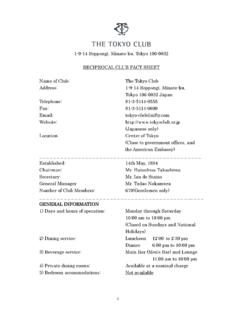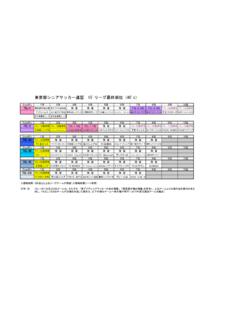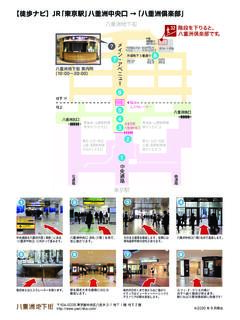Transcription of From Deep Ecology to the Blue Economy 2011 - ZERI
1 The blue EconomyFrom deep Ecology to The blue EconomyA review of the main concepts related to environmental, social and ethical businessthat contributed to the creation of The blue Economy written by Gunter PauliFebruary 2011based on an original article written by the same author in 1999 2011, Gunter PauliIf I can see beyond the green Economy today,It is thanks to the giants on whose shoulders I stand Environmental deterioration and the imbalance between man and nature increasingly preoccupy scholars, philosophers, businessmen and policy makers alike. The disparity between rich and poor and the continuous incapacity to respond to the basic needs of all (not only humans) preoccupies many. It seems that the only sustainable phenomena of our modern time is the loss of biodiversity and our incapacity to eliminate poverty. Even though we all look reality in the eye, we seem to lack the vision and the tools to make a difference and steer our excessive consumption society in general and our competitive business world towards sustainability.
2 Our media continue to report on the loss of forest cover, biodiversity, and human dignity. My concern has always been: in spite of the statistics showing the downward trends, what can I do to make a material difference on the ground. Since the 1950s we have seen a series of ideas and conceptual frameworks that have emerged from studies that illustrate the disconnect between our exploitative culture and the Earth's limited resources. This document attempts to summarize the most important persons and organizations whose work has greatly influenced my present thinking on business, environment, social development and ethics. This presentation does not attempt to be exhaustive, but rather to offer a briefing on the individuals, the institutions and the concepts that have shaped and continue to evolve in theory and in practice that have inspired me to develop ZERI since the 1990s.
3 It is with great humility that the vision and the portfolio of initiatives that I have summarized by 2010 as "The blue Economy " have come about because I can stand on the shoulders of so many pioneers who challenged the status quo and undertook more than I could ever have done or imagined. Without their leadership, and in many cases through their mentorship, I could not stand here today. The early pioneers in the 50s, 60s and 70s. In his original analysis dating back to the 1950s, Arne N ss established a basis for what is known today as deep Ecology , a term he coined in 1972. His philosophical masterpiece puts mankind back in its place: man is part of nature, not above, not separate from, nor can mankind pretend that nature is there to serve. If man would pretend this were the case, then humanity could undermine the very foundations on which it has evolved over the past thousands of years.
4 2011, Gunter Pauli When I hit the brick wall in 1993, realizing that I had put all my efforts in cleaning up the rivers in Europe, simultaneously led to the destruction of the rain forests in Indonesia and the habitat of primates, it was Fritjof Capra who connected me to the work of Arne N ss who I had the pleasure of meeting when he was given a life time recognition for his work at the Swedish Royal Academy of Sciences. Our dinner discussion seemed to have lasted for years, and his readings converted me into a deep ecologist. His clarity of thought, and harmony of lifestyle and mindset contributed to the decision to give up my castle in Belgium and settle in a tea house with only one table (for my computer) as furniture. The tatami floor, the ofuro bath, the shoji windows and the view of a garden with blossoms each month of the year seemed all I needed.
5 deep Ecology , by some regarded as a fundamentalist approach, offers an inclusive concept, an all-encompassing framework, which lead to several new thoughts, and variations on this main theme however it was Arne N s who made the greatest impression on me. Perhaps the most prominent new thought leaders who formulated their insights in the early 60s are James Lovelock s GAIA theory, developed in dialogue with Lynn Margulis, the extraordinary bioligist who authored the milestone book "The Five Kingdoms of Nature". GAIA prescribes that the Earth, Mother Earth is a unique system, a complex organ which cannot be neither dissected, nor considered separate from any of its components. This Goddess, who was admired for the first time when man flew into space, is therefore without surprise, a concept finetuned by an aerospace scientist.
6 Lynn Margulis made a lasting impression with her logic that shifted our biologists from the "Three Kingdoms: animal, plants and minerals" to the "Five Kingdoms: bacteria, protista, fungi, plants and animals" influenced our methodology of cascading of matter, nutrients and energy from one kingdom to the other. When I met Lynn a few times at "The Bioneers at the Bay" in Boston organized by the Marion Institute - an organization that has provided such critical support to many of my endeavors - she shaped my approach, and convinced me that we are not descendants of the apes, rather we are a symbiosis of bacteria. The holistic thinking that philosopher Arne N ss and scientist James Lovelock identified and described, found a complementary approach in the system s thinking that led to the famous Reports to the Club of Rome: "Limits to Growth: a report to the Club of Rome" and "Mankind at Crossroads".
7 The respected business executive Aurelio Peccei considered that the fast growth track, which was maintained by the world Economy in the 60s, carried inherent 2011, Gunter Paulishortcomings. It was Jay Forrester from MIT who captured that well articulated inquietude of the founder of the Club of Rome into a computer model that quantified the systems dynamics in a revolutionary way. A group of young MIT students headed by Donella and Dennis Meadows, J rgen Randers, working with Dr. Forrester established that the interlinkages were framed into a mathematical model which brought surprising results: our model of consumption leads to exhaustion of the Earth. Arne Naess and James Lovelock published and spoke in an well-articulated manner on the issues outlined. However, their publications were only read by a few.
8 No one stirred as much discussion with its reports as the Club of Rome did. Aurelio Peccei masterfully dominated the headlines of the media for a decade. The Club was founded just months before the May 1968 uproar. The fact that the first report was published just months ahead of the first oil crisis made the release of "The Reports to the Club" most timely. The first report to the Club of Rome became the second best sold non-fiction books, after the Bible. No other report succeeded in setting the tone and the content of public debate, both at policy and industry level. However, the Report that most influenced me was "No Limits to Learning" published in 1979, a dramatic approach to our capacity to learn - provided we use all our available resources. The three authors James Botkin, Mahdi Elmandjra and Mircea Malitza became friends over the years and even at his advanced age, Dr.
9 Malitza continues our dialogues whenever I return to Bucarest. Aurelio Peccei kindled that entrepreneurial spirit in me, and from the moment we met in 1979 he shaped that basic principle that we have to be the change we want to see happen, a fundamental Gandhian approach. Inspired by his wisdom and words, it became obvious that the way forward should include audacious government policies as well as innovative business models. It was such a privilege to work closely with Dr. Peccei and in the aftermath - while working on his biography - learn to know Donella, Dennis, J rgen and Jay. Dennis and I interacted more often as we shared membership in the Club of Rome. And while he is such an eloquent speaker on the subject, Donella had the finest writing style that captured all senses. The Extention of the 80s and 90s The systemic approach to the world problematique, a word invented by Aurelio Peccei, to highlight the complexity of the challenges, was assessed in parallel by Robert Ayres who placed the macro-economic manufacturing model 2011, Gunter Pauliinto a new framework: "Industrial Metabolism".
10 He argued that if industry were to survive the challenges it poses, manufacturing needs to behave like a metabolism, producing and consuming like any digestive system in nature does: transforming from one to the other producing and consuming matter and energy. The approach, which has been documented theoretically on a macro-economic level generated broad academic interest, the business community has remained quite distant from this thought-provoking concept. We met regularly at the United Nations University in Tokyo where we worked on parallel concepts in the mid-90s on a platform provided by Heitor Gurgulino de Souza, its visionary rector for over a decade. The systems approach, in a theoretical and geo-cultural context was best spelled out by Fritjof Capra in his trendsetting book The Tao of Physics and later complemented by Turning Point , and recently "The Web of Life".






